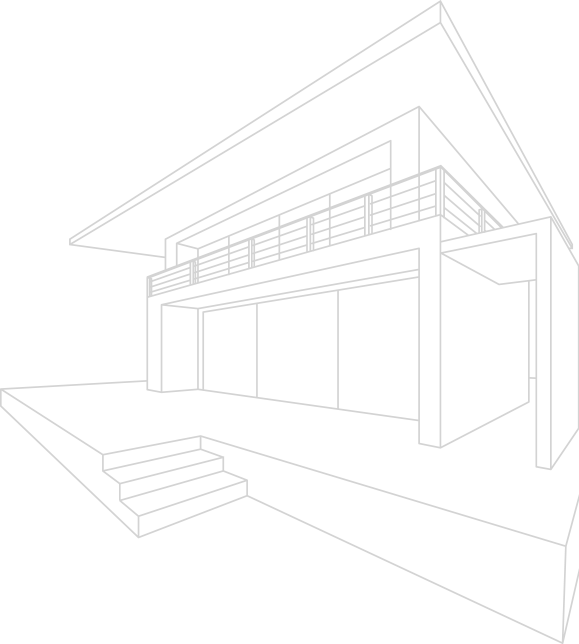Heated Tile Floor: Everything You Need to Know
Introduction
A radiant heating system is often considered a luxury and can transform your home into a cozy sanctuary, especially during those bitter winter months. Forget the jarring morning experience of stepping onto a cold bathroom floor; these radiant floor heating systems provide an unparalleled level of comfort and warmth right under your feet.
In this blog, we'll delve into the benefits of heated tile flooring, its tile installation process, and factors to consider before deciding if it's the right choice for your home. Let's turn up the heat and explore this enticing home improvement option.
How does it work?
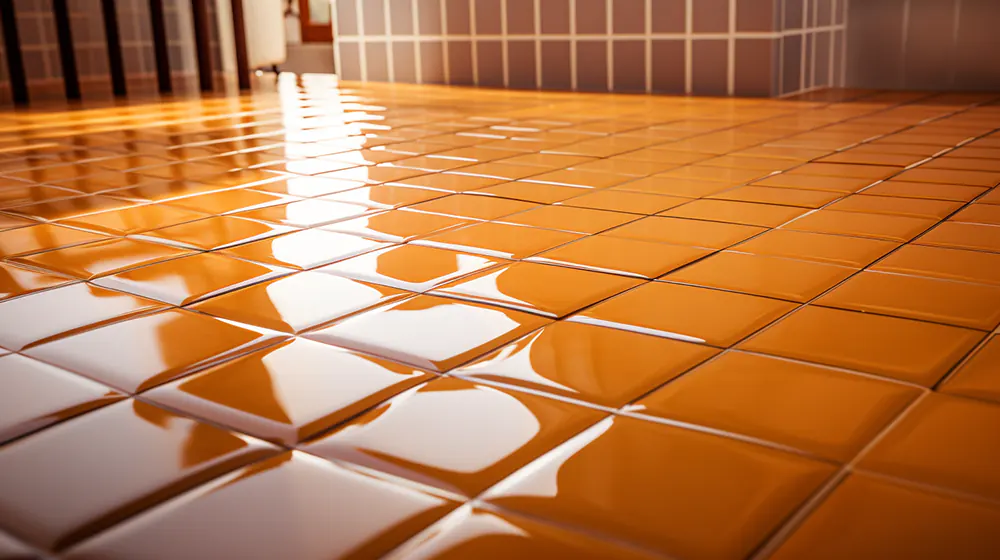
The heated tile flooring system works by using electric wires or water tubes installed underneath the tiles. These systems use radiant heat, which is considered more efficient than traditional heating methods because it warms objects and surfaces directly instead of heating the hot air. This means that the entire floor surface becomes warm, providing a consistent and comfortable temperature throughout the room.
Electronic Systems
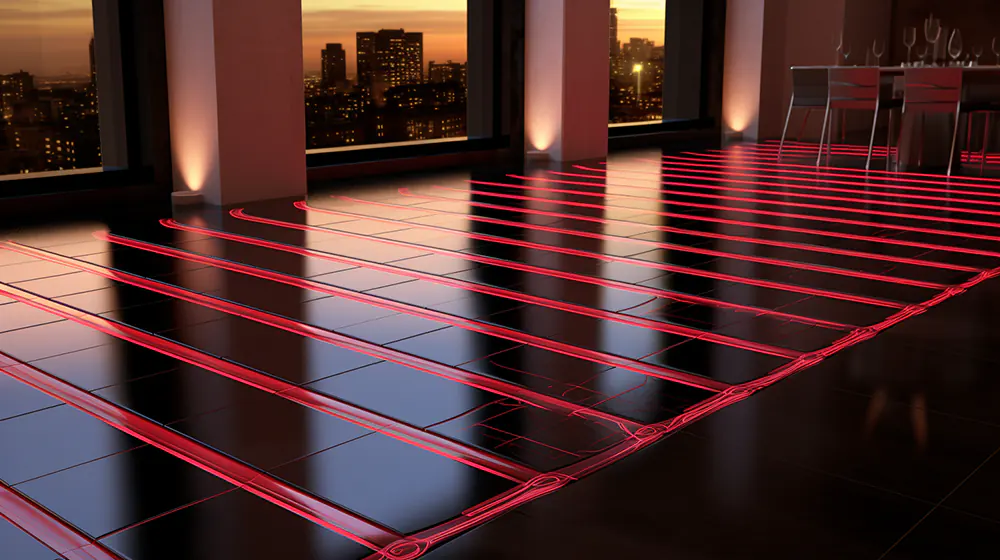
Electric heated tile floors use heat mats or cables that are installed directly underneath the tiles. The electric current flowing through these wires generates heat, which is then transferred to the tiles and radiated upwards. These systems are controlled by a thermostat, allowing you to adjust the temperature according to your preference.
Hydronic Systems
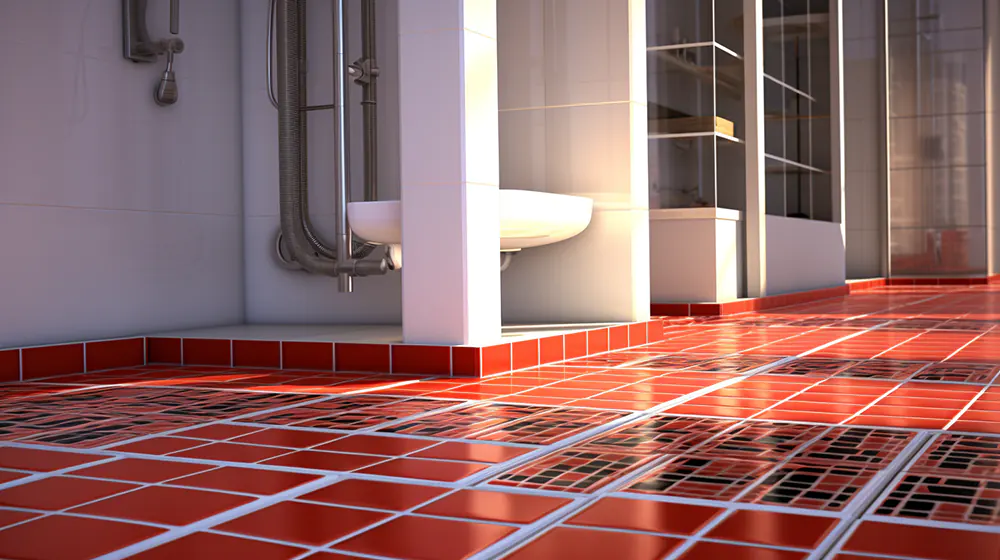
Hydronic heated tile floors use hot water pipes, similar to a traditional radiator system, to heat the tiles. These tubes are connected to a boiler or water heater and circulate hot water underneath the floor surface. Like electronic systems, hydronic systems also use a thermostat for temperature control. However, they require professional installation and may be more costly upfront.
Benefits of Heated Tile Floors
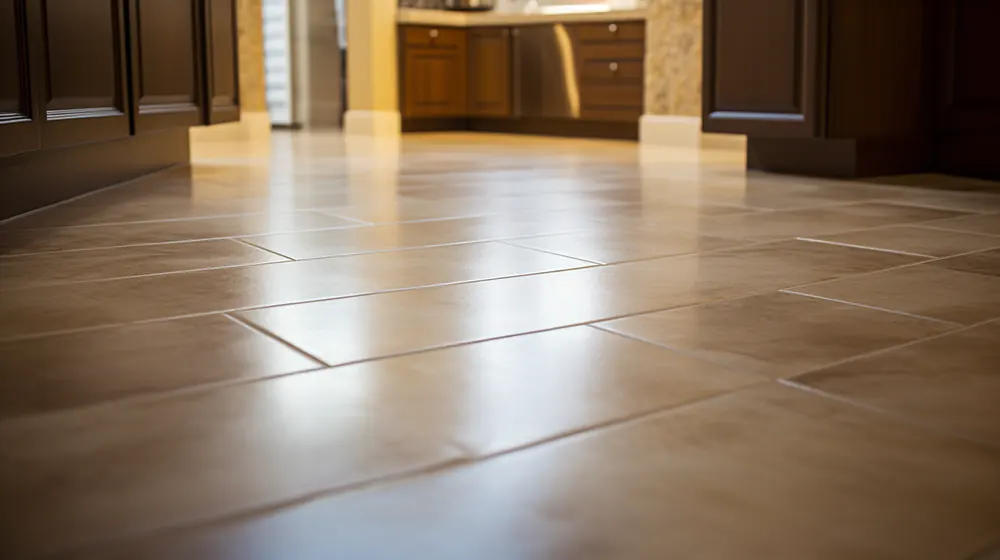
Apart from the obvious benefit of keeping your feet warm, heated tile floors offer several other advantages:
- Energy Efficient: As mentioned earlier, underfloor heating systems use radiant heat to warm up the room, making them more energy-efficient compared to traditional heating methods. This can result in lower energy bills and a more environmentally friendly home.
- Comfort: A warm tile floor provides consistent warmth across the entire floor surface, eliminating cold spots. This creates a cozy and comfortable environment, perfect for those chilly winter days.
- Health Benefits: Traditional heating systems can dry out the air, which can irritate allergies and respiratory problems. With heated tile floors, there is no air circulation, which can help alleviate these issues.
- Easy Maintenance: Heated tile floors require minimal maintenance, with only occasional cleaning and checking for any damage to the wiring or tubes. This makes them a hassle-free and long-lasting option for your home.
Installation Process; Floor Heating System
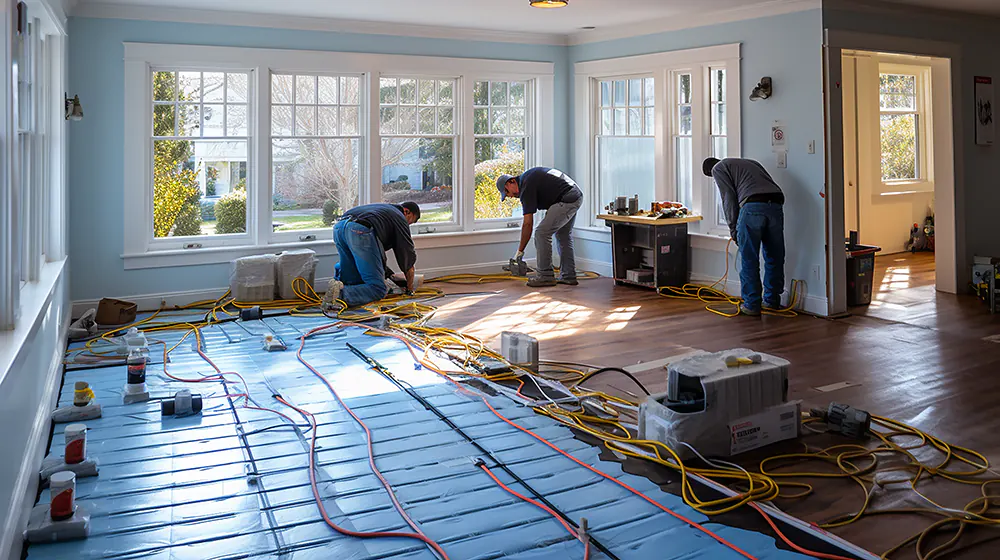
The installation process for heated tile floors depends on the type of system you choose. Electric systems are generally easier to install and can even be a DIY project for those with some experience. However, hydronic systems require professional installation and can be more complex to be properly installed.
Here's a basic overview of the installation process for electric radiant heated tile floors:
Measure the Room: To ensure accurate planning, it is crucial to measure the room dimensions. By doing so, you can determine the precise amount of wiring or heat mats required for optimal installation and performance.
Floor Materials and Tools: Buy the necessary materials and tools, including heat mats or wires, adhesive, and a thermostat.
Prepare the Subfloor: Before starting the installation process, it is crucial to ensure that the subfloor is not only clean, dry, and level, but also free from any dust, debris, or moisture. Taking the time to thoroughly prepare the subfloor will help to ensure a smooth and successful installation, providing a solid foundation for the rest of the flooring project. It is highly recommended to hire a professional when doing this type of a project if there is any extra moisture or debris you could have lasting defects and inconsistencies in your flooring causing lasting damage to your floor.
Lay Down Insulation: To improve energy efficiency, it is recommended to lay down insulation sheets over the subfloor before installing the heating system.
Install Heating Mat or Heating Cable: The heat mats or cables should be installed according to the manufacturer's instructions, ensuring that they are evenly spaced and secured in place.
Lay Down Tile Backerboard: This ensures a stable surface for the tiles and helps protect the heating system.
Lay Tiles: Once the heating system is in place, tiles can be installed as usual.
Connect Thermostat: The thermostat should be connected to the heating system and placed in a convenient location for temperature control.
Test System: Before using the heated tile floor, it's essential to test the system and ensure everything is working correctly.
Factors to Consider of Heated Floors
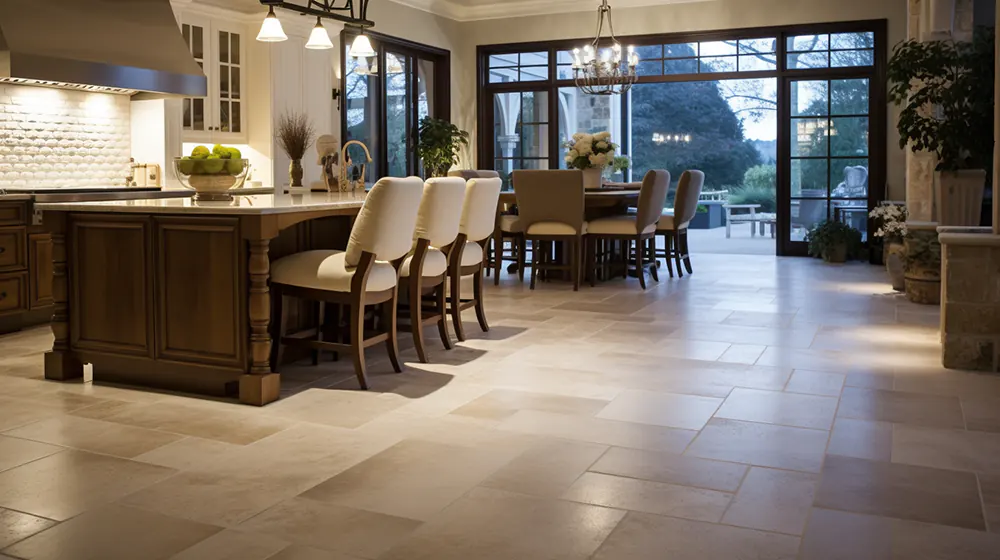
Before deciding if radiant heated floors are right for your home, here are a few factors to consider:
- Cost: Heated tile floors can be more expensive upfront compared to traditional heating systems. However, they may provide long-term savings on energy bills.
- Available Space: The installation process requires some extra space, so make sure you have enough room in your home for the system. Additionally, heated tile floors may not be suitable for every room in the house, so consider which areas would benefit most from this feature.
- Floor Type: Heated tile floors work best with ceramic or stone tiles. Thicker tiles may take longer to heat up and may require a more powerful heating system.
Cost Of Heated Floor Tile Installation
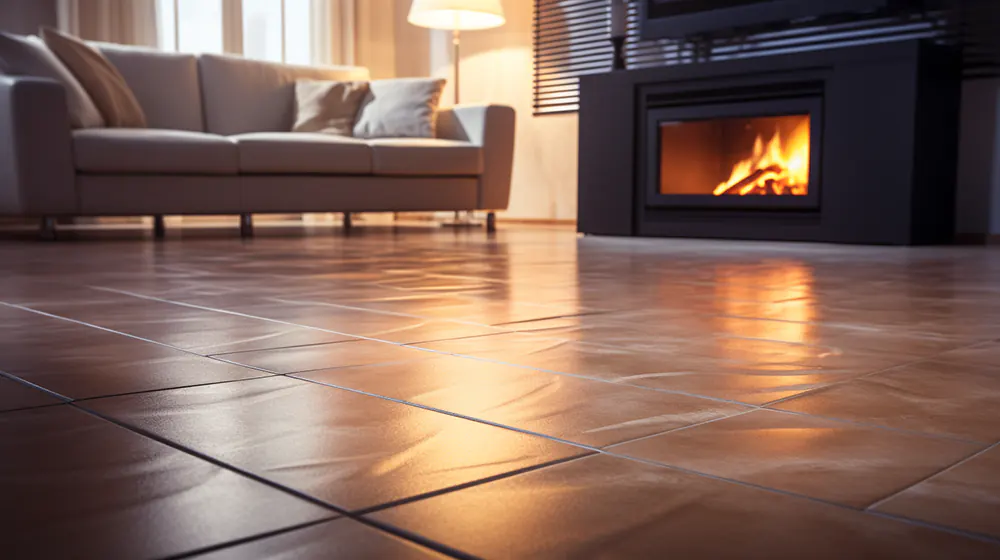
The cost of installing floor heating can vary depending on several factors. Here's a breakdown:
- Size of the room: The larger the room, the more materials and labor will be required, which can increase the cost.
- Type of system: There are different types of heated tile floor systems available, each with its price range.
- Professional installation fees: Hiring a flooring professional to install the heated tile floors will incur additional costs.
On average, you can expect to pay between $15-$25 per square foot for materials and installation, but keep in mind that the final cost may vary based on these factors.
It's essential to consider all these factors and costs before deciding if heated tile floors are a worthwhile investment for your home. However, many homeowners who have made the switch to heated tile floors can attest to its many benefits and overall satisfaction with their decision.
Frequently Asked Questions
Is it possible to install heated tile floors in an existing home?
Yes, but it may require additional renovation work, which could potentially increase the cost compared to installation during new construction. The specific details and extent of the renovation would need to be assessed to determine the overall impact on the project.
Are heated tile floors safe?
Yes, heated tile floors are safe to use as long as they are installed correctly by a professional and regularly maintained. Proper installation ensures the system functions properly and minimizes any potential risks. Regular maintenance helps to identify and address any issues promptly, ensuring the continued safety and efficiency of the heated tile floors. Additionally, radiant heat works wonders in providing a cozy and comfortable environment.
Can I control the temperature of each room separately with a heated tile floor system?
Yes, if the system has multiple thermostats or heating zones, you can adjust the temperature for each room's entire tile floor individually. This can be achieved by installing separate thermostats in each room and connecting them to the central heating system.
However, please note that this may require additional wiring and installation costs. It is recommended to consult with a professional to determine the best approach for your specific needs.
What is the lifespan of heated tile floors?
Heated tile floors are designed to be long-lasting and durable. With proper installation and maintenance, they can last for many years, often matching the lifespan of the flooring material itself. Electric systems typically last for around 30 years, while hydronic systems can last even longer. However, the lifespan can be influenced by factors such as the quality of installation, the type of tiles used, and how well the system is maintained.
Do heated floors add value to your home?
The addition of heated tile floors can be seen as a luxury feature and may increase the value of your home. However, the exact impact on property value will depend on various factors, including location, market trends, and overall demand for this feature in the area.
Conclusion
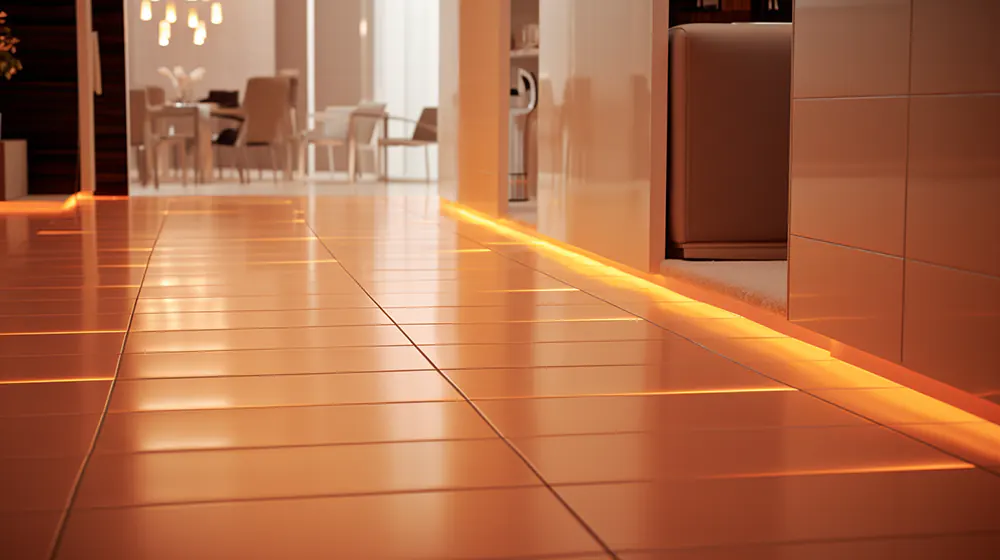
Heated tile floors offer a luxurious and comfortable heating option for your home. With various types of systems available, you can choose one that suits your budget and specific needs. Although the tile flooring installation may require some upfront costs and planning, the long-term benefits make it a worthwhile investment.
Consider all factors carefully before deciding if heated tile floors are the right choice for your home. So go ahead, treat yourself to cozy and warm floors all year round! The benefits of heated tile floors are clear, from energy efficiency to improved comfort and health.
With proper installation and maintenance, they can be a valuable addition to any home. Consider your options carefully and consult with a professional before making a decision. Enjoy the luxury of heated tile floors and make your home a comfortable haven for those chilly days! So why wait? Get started on upgrading your home with heated tiled floors today!


